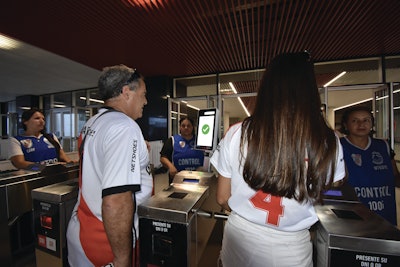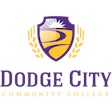
When the Milwaukee Brewers returned to American Family Field this spring, fans encountered something new at two stadium entrances: the option to enter without showing a ticket or ID, thanks to facial recognition cameras that validate an individual’s identity in a frictionless entry process.
“It’s a great system that people can opt into — it’s not mandatory,” Brewers president of business operations Rick Schlesinger told reporters in February. “It’s a test run, and if it’s successful and the fans like it, we’ll introduce it at more gates. I suspect in a few years, all ballparks will have this.”
The Brewers aren’t alone. By the end of the 2024 season, seven MLB teams — the Cincinnati Reds, Houston Astros, Kansas City Royals, Philadelphia Phillies, San Francisco Giants, Tampa Bay Rays and Washington Nationals — were using facial recognition technology. The trend is expected to accelerate as venues look to improve entry efficiency and enhance security.
How it works
The system employed by MLB is called Go-Ahead Entry, and it combines security screening with facial authentication. Fans register through the MLB Ballpark app by uploading a selfie.
“MLB Go-Ahead Entry combines free-flow security screening with facial authentication and access control, so it already has screened you from a safety standpoint and this is just expediting the ticket validation step,” Karri Zarembo, MLB senior vice president of ballpark experience, told FOX6 News Milwaukee.
Joe Scheschareg, business development representative for Veridas, a company that develops proprietary facial recognition technology for venues, explains his company’s approach to the technology.
“Everything is opt-in. No one is required to upload a picture of their face or their driver’s license,” Scheschareg says. “We want to educate people that this is safe, and everything that is uploaded into our database is deleted right away. We don’t keep any picture of your face.”
Veridas translates facial images into what Scheschareg describes as a biometric vector of the person’s face, likening that vector to a QR code. “That QR code cannot be used. You can’t take a picture of the QR code or scan it, so there’s no way to tell who actually was the one that has that biometric vector.”
Benefits beyond speed
For stadium operators, facial recognition offers advantages beyond just faster entry.
“I think with this type of technology, it allows the stadiums and organizations to not have as many ticket scanners or ticket operators there at the gates,” Scheschareg notes. “They’re able to take those employees and put them elsewhere in the ballpark or stadium, so it kind of opens up more opportunities for employees to be elsewhere, where there might be more need for them.”
Another significant benefit is data collection and a better understanding of who’s attending events. “It gives teams and stadiums more data about their fans,” Scheschareg explains. “This ties your face to your ticket. Being able to see who’s coming in, and really tying that ticket to the individual, I think, is what teams are starting to realize is pretty important for them.”
Scheschareg says all that information can enhance marketing efforts, as well, creating a personalized gameday experience for fans. “If you have a 12-year-old kid coming to the game, or someone under 21 years of age, you’re not going to try and promote a Budweiser or Bud Light to them.”
Future applications of the technology could extend beyond entry points. “Access is one thing with facial biometrics, but once you get into the stadium, it opens up a whole new world of use cases,” says Scheschareg. “Concessions is something that I personally think — in the next couple years — is going to be a major use case for facial technology.”
Privacy concerns
Despite the promised benefits, facial recognition technology raises significant privacy concerns among fans and privacy advocates.
“Data privacy is probably the biggest thing that we have to be concerned about,” Scheschareg acknowledges. “I think that’s where a lot of people, especially here in the U.S., are really hesitant to use the technology.”
Privacy experts have been speaking out recently with concerns related to TSA’s use of the technology in airports.
Jennifer King, a privacy and data policy fellow at Stanford University’s Institute for Human-Centered Artificial Intelligence, noted in a recent Huffington Post article that organizations can be “a little vague about what they were doing with the data,” adding that, “I’m sure that the dream of enforcement agencies would be to be able to track people in real time based on something like facial recognition.”
While stadium implementations emphasize the opt-in nature of their systems, privacy advocates point to a “normalization” of facial recognition technology that could lead to broader, less voluntary applications. Stadium policies generally state that facial images are converted to numerical tokens and discarded after verification, but the long-term storage and other potential uses of data remain concerning.
Travis LeBlanc, a lawyer and former member of the Privacy and Civil Liberties Oversight Board, told Huffington Post that facial recognition technology in the wrong hands carries the potential for abuse. “TSA is part of the Department of Homeland Security, which is also responsible for immigration enforcement,” LeBlanc says. “There are lots of different uses that you could see for these images.”
Saira Hussain, a senior staff attorney at the Electronic Frontier Foundation, suggests that if more people decline facial scans, organizations might “think twice about whether it’s actually effective to roll out programs like these.”
Finding balance
As facial recognition technology continues to expand across sports venues, the industry faces the challenge of balancing innovation with privacy concerns. Teams like the Brewers emphasize the optional nature of facial recognition entry.
“Where we stand right now is, it’s an educational piece,” Scheschareg says. “This type of technology is all about education. It’s all about getting people to realize that it’s really a safe technology.”
While many U.S. teams remain cautious about being early adopters, Veridas has made substantial inroads elsewhere, according to Scheschareg. “It’s funny to see the differences between the adoption rate down in South America or Europe versus here in the U.S.,” he says. “We actually signed a couple contracts, almost six months ago now. One of them was River Plate stadium down in Argentina, which is one of the largest soccer stadiums in the country. They’re going full facial authentication for all entrance points at their stadium.
“I think this is definitely a technology that teams and stadiums are starting to lean toward, but right now, a lot of people seem to be a little hesitant about it. They don’t really want to be the first one to do it.”
Whether fans here in the U.S. or elsewhere will embrace or resist this technology remains to be seen. Given the prediction of the Brewers' Schlesinger that “all ballparks will have this” within a few years, the conversation around facial recognition in sports venues is just beginning.





































